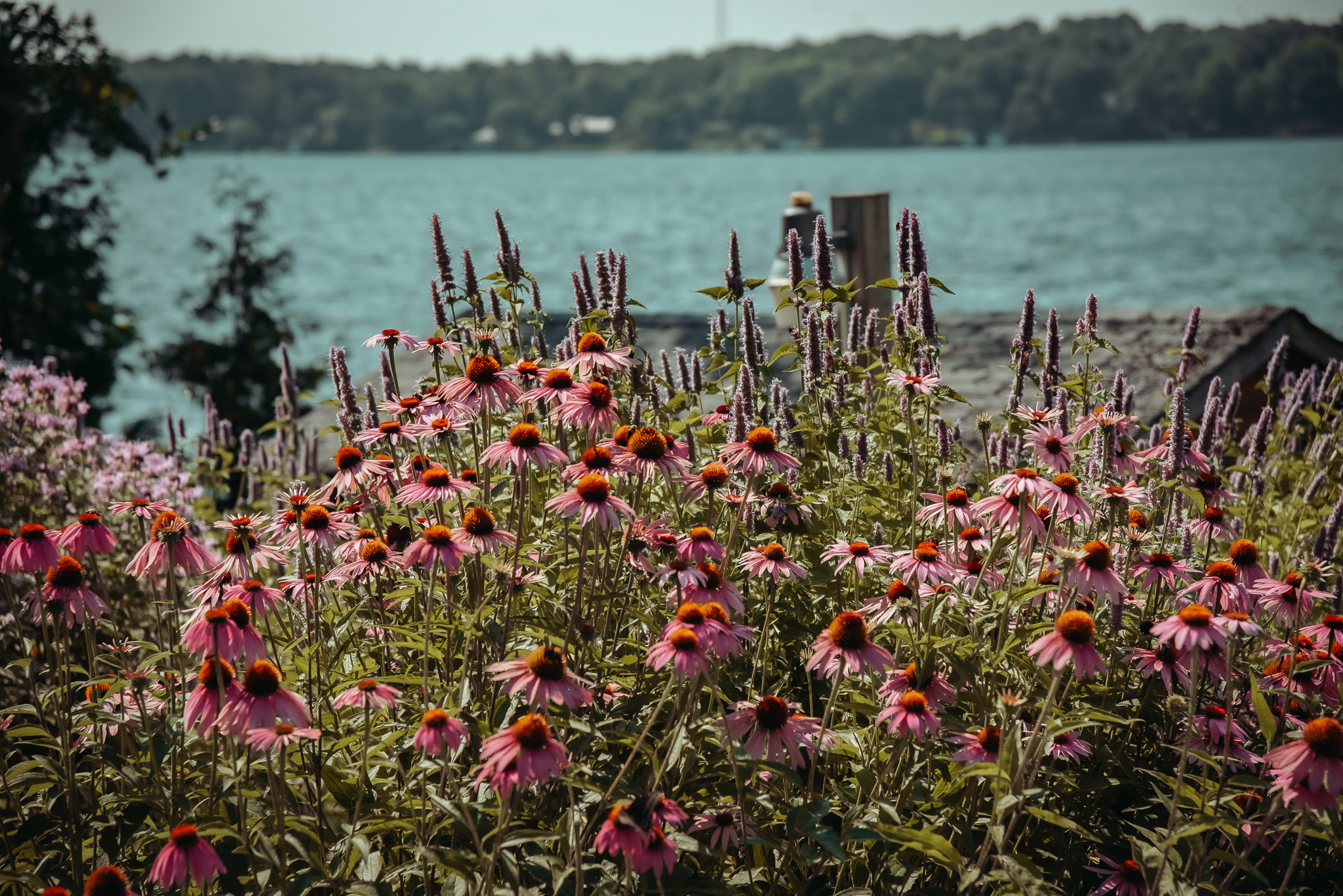Seeds and Seed Dispersal
Some pop, some glide, some stick and many float in the air or on the water. Every spring we see that there is enduring evidence of our local plants’ ability to survive and spread in the vibrant new growth that carpets our forests and fields. How seeds travel merits closer investigation! Some, incredibly, are spread by animal scat (poop). Your students will participate in some hands-on activities, which simulate the dispersal of seeds (except the scat one!), sort and collect wildflower seeds and examine in detail, their methods of dispersal.
Post Camp Kawartha visit
Plan a pollinator garden (as described in The Big Book of Nature Activities by Jacob Rodenburg and Drew Monkman, page 179 activity #25)
- You’ll learn: How with a little but of planning you can attract a variety of pollinators into your yard.
- You’ll need: Paper and a pencil
- Procedure: Winter is a good time to sit down with a paper and pencil and plan how you can help bees and other pollinators on your property. The two key features of good be habitat are a wide range of bee-friendly flowers and lots of good nesting sites. As for monarchs, milkweed plants are a must. Here are some guidelines to follow: Use (or plan for) a garden in a sunny location
- Choose mostly native plants, because many exotics produce very little nectar and pollen.
- Be sure to include plants that will provide pollen and nectar from early spring through fall.
- Spring: Wild strawberry, wild geranium, wild apple, blueberry, chokecherry, serviceberry, staghorn sumac, dogwood, willow, lilac.
- Summer: Bergamot, buttonbush, purple coneflower, Culver’s root, meadowsweet, New Jersey tea, milkweed, hyssop, Joe-Pye weed, common sunflower, pumpkin/squash, lamb’s ear, comfrey, Russian Sage, nodding onion, prairie clover, native roses, fireweed.
- Late summer and fall: Aster, goldenrod, blue vervain, cup plant, false sunflower, Mexican sunflower, butterfly bush, Verbena
- Plant clusters of three to five of each flower species
- Provide a shallow dish of water with partly submerged stones as perches, and a muddy patch where bees can collect mud for nesting.
- In addition to the garden, allow a corner of your yard to go wild with grasses, weeds, etc.
- Consider planting a patch of soil-improving plants, such as clovers, alfalfa, and buckwheat, which provide a veritable feast of nectar and pollen.
- Establish and protect suitable nesting sites for bees.
Concept Map – Inquiry based learning
- Read this quote “All kindness begins with the sown seed”. – Mary Oliver
- Have your children brainstorm: What “seeds” can we plant in our community?
- See if the class can action any of these ideas. Encourage cross-curricular content and ideas
Seed Dissection!
“In this activity, students will observe and draw the inside of a seed that is beginning to grow.” https://www.scienceworld.ca/resource/seed-dissection/
Pollinator Seed Patties: “In this activity, students make a paper patty from old paper and seeds to grow flowers which attract pollinators.”
https://www.scienceworld.ca/resource/pollinator-seed-patties/
Who eats the seeds?
A guided inquiry into the various provincial and territorial birds
https://www.birdnote.org/explore/tune-kids-nature-resources-educators/stately-state-birds
https://www.birdnote.org/locations/canada
Extensions
Healthy Soil Exploration Activity (as described by Youth in Food Systems)
Pollinator Resources and Activities (as described by Youth in Food Systems)
https://seeds.ca/schoolfoodgardens/wp-content/uploads/2018/03/3rd-Grade-Science-Pollinators.pdf
Designing Butterfly Habitat (as described by Youth in Food Systems)
Garden Poetry Activity (as described by Youth in Food Systems)
https://growing-minds.org/documents/poetry-in-the-garden.pdf/
A plethora of resources and lessons on birds (who rely on seeds) and their ecosystems.
https://www.birdnote.org/explore/tune-kids-nature-resources-educators/shows-educators-ngss-k-2

